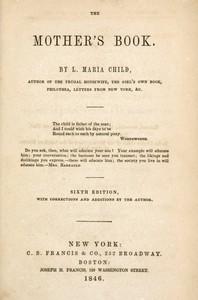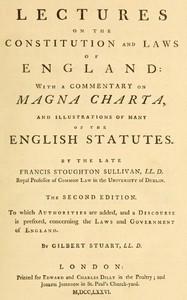|
|
Read this ebook for free! No credit card needed, absolutely nothing to pay.Words: 108101 in 42 pages
This is an ebook sharing website. You can read the uploaded ebooks for free here. No credit cards needed, nothing to pay. If you want to own a digital copy of the ebook, or want to read offline with your favorite ebook-reader, then you can choose to buy and download the ebook.

: Drakula: angol regény by Stoker Bram - Horror tales; Epistolary fiction; Gothic fiction; Vampires Fiction; Dracula Count (Fictitious character) Fiction; Transylvania (Romania) Fiction; Whitby (England) Fiction@FreeBooksThu 08 Jun, 2023 INTRODUCTION. In preparing the second number of our manual for Arbor Day, we have endeavored to keep in mind the fact that Arbor Day was originally designed not as a mere festival or holiday, a pleasant occasion for children or adults, but to encourage the planting of trees for a serious purpose--the lasting benefit of the country in all its interests. As the poet Whittier has so well said, "The wealth, beauty, fertility, and healthfulness of the country largely depend upon the conservation of our forests and the planting of trees." Arbor Day is not a floral festival, except as the trees may offer their bright blossoms for the occasion. In making our selections from authors, therefore, we have restricted ourselves to what they have said about trees, and have endeavored also to choose only such selections as are of high literary character, and so, not only admissible for occasional use but worthy to be learned and carried in memory for life; trees of thought which may be planted in the young minds in connection with Arbor Day, to grow with their growth and be perpetual sources of enjoyment. ORIGIN OF ARBOR DAY. To J. Sterling Morton, ex-Governor of Nebraska, and Secretary of Agriculture under President Cleveland, belongs the honor of originating this tree-planting festival, and he is popularly known throughout our whole country as the "father of Arbor Day." So well has the day been observed in Nebraska since 1872 that there are now over 700,000 acres of trees in that state planted by human hands. The successful establishment of the day in Nebraska commended it at once to the people of other states, and it was soon adopted by Kansas, Iowa, and Minnesota, and was not long in making its way into Michigan and Ohio. In the latter state it took on a new character, which has caused it to spread rapidly throughout the country. The teachers and pupils of the schools were invited to unite in its observance, and instead of trees being planted merely as screens from the winds, they were also planted for ornamental purposes and as memorials of important historical events and of celebrated persons, authors, statesmen, and others. Thus the tree-planting has gained a literary aspect and an interest for all classes, for young as well as old. In preparation for it the pupils of the schools have been led to the study of trees, their characteristics and uses. They have learned the history of celebrated trees and of persons who have been connected with them. They have become familiar with the lives of eminent persons and the best writings of distinguished authors, and thus have received most valuable instruction, while, at the same time, their finer tastes have been cultivated. Since the observance of the day has been modified, as it was on its introduction into Ohio, it has spread rapidly through the country and at present forty-four states and territories celebrate Arbor Day. Its every way healthful and desirable features have so generally commended it also that it has gained a foothold abroad and has begun to be observed in England, Scotland, France, and even in far-off South Africa. It has become pre?minently a school day and a school festival. In many cases school teachers and superintendents have introduced its observance. But it has soon so commended itself to all that, in most cases, it has been established by law and made a legal holiday. Readings for Arbor Day. ABOUT TREES. From the originator of Arbor Day. A tree is the perfection in strength, beauty, and usefulness of vegetable life. It stands majestic through the sun and storm of centuries. Resting in summer beneath its cooling shade, or sheltering besides its massive trunk from the chilling blast of winter, we are prone to forget the little seed whence it came. Trees are no respecters of persons. They grow as luxuriantly beside the cabin of the pioneer as against the palace of the millionaire. Trees are not proud. What is this tree? This great trunk, these stalwart limbs, these beautiful branches, these gracefully bending boughs, these gorgeous flowers, this flashing foliage and ripening fruit, purpling in the autumnal haze are only living materials organized in the laboratory of Nature's mysteries out of rain, sunlight, dews, and earth. On this spot, in this tree, a metamorphosis has so deftly taken place that it has failed to excite even the wonder of the majority of men. Here, sixty years ago, a school boy planted an acorn. Spring came, then the germ of this oak began to attract the moisture of the soil. The shell of the acorn was then broken open by the internal growth of the embryo oak. It sent downward a rootlet to get soil and water, and upward it shot a stem to which the first pair of leaves was attached. These leaves are thick and fleshy. They constitute the greater bulk of the acorn. They are the first care-takers of the young oak. Once out of the earth and in the sunlight they expand, assume a finer texture, and begin their usefulness as nursing leaves, "folia nutrientia." They contain a store of starch elaborated in the parent oak which bore the acorn. Free books android app tbrJar TBR JAR Read Free books online gutenberg More posts by @FreeBooks

: The mother's book by Child Lydia Maria - Children Conduct of life; Child rearing; Mother and child@FreeBooksThu 08 Jun, 2023
|
Terms of Use Stock Market News! © gutenberg.org.in2025 All Rights reserved.






